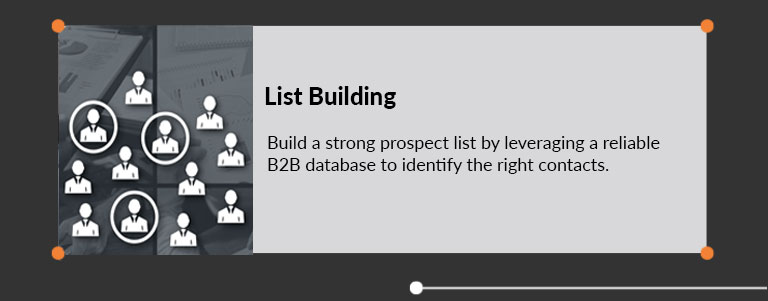About Construction Leads

How A B2B Lead Generation Agency Helps You Get More Construction Leads
How to Get Construction Leads: Proven Strategies for Success
The Hidden Struggles: Unpacking Construction Industry Pain Points
Contractors, project managers, and construction executives keep the world physically moving forward—but behind every blueprint and building site are persistent challenges that leave them strapped for time, resources, and clarity. For marketers looking to generate construction leads, understanding these daily struggles is the first step in offering solutions that truly connect.
One constant headache: project delays and labor shortages. With tight timelines, unexpected supply issues, and a shrinking pool of skilled workers, construction professionals are constantly juggling priorities. Solutions that simplify project planning, streamline procurement, or fill workforce gaps are more than welcome—they’re urgently needed.
Then there’s the bid process. Winning new work means submitting precise, competitive bids while keeping margins intact. Tools that help them manage bid tracking, estimate costs accurately, or gain a competitive edge can quickly capture their attention—especially if they integrate well with existing workflows.
Compliance is another pressure point. From OSHA regulations to local zoning codes, construction professionals must stay compliant without getting bogged down in paperwork. They value anything that makes this easier—whether it’s safety training platforms, documentation tools, or consulting services that flag risks early.
These pain points—delays, bidding, and compliance—point to one thing: construction professionals need time-saving, results-focused solutions. Marketers who recognize this and deliver direct value will find a wealth of qualified construction leads ready for outreach.
Close the Deal with Construction Pros
This audience is practical and no-nonsense. They respond best to straight talk, clear benefits, and proof of performance. Case studies, real-world ROI, and product demos go a long way. The best pitch? Show how your solution saves them time or keeps their projects on track.
How to Generate Construction Leads: Innovative Techniques for Your Business
Target a High-Demand Sector with Precision Marketing
Start by building a tailored construction contact list using a B2B database. Filter by job title—such as project manager, procurement officer, or operations lead—then narrow further by company size, specialty (e.g., commercial, residential, infrastructure), or location. The more specific, the better.
Then, craft a targeted outreach campaign. Whether it’s promoting estimating software, safety products, or equipment rentals, speak their language: productivity, safety, deadlines, and bottom-line impact.
Search visibility is also key. Optimize your website for keywords like “construction bidding software” or “tools for contractors” and run PPC ads targeting terms like “improve construction job site efficiency.” These clicks lead construction leads to high-intent landing pages with demos, whitepapers, or consult scheduling options.
Don’t underestimate the power of email marketing. Reach Marketing’s Construction Lead Programs—MQL, SQL, and SAL—leverage proprietary B2B data to deliver targeted outreach campaigns that attract high-quality construction leads. A campaign might promote a “2025 Project Planning Guide” or “Construction Site Compliance Checklist” via email. Those who download are tracked, scored, and leads are delivered your way: select from CRM, FTP, or other delivery methods.
The MQL Program captures interest. The SAL Program filters further. The SQL Program delivers fully qualified leads that are ready for sales follow-up—with meetings scheduled, so your team can focus on closing.
Tools That Boost Your Construction Marketing Strategy
- CRM Systems: Keep tabs on prospects and project timing.
- Marketing Automation: Send timely follow-ups based on construction project cycles.
- Data Analytics: Spot trends and buyer behavior to better match offers to needs.
With the right message, audience, and tools, construction leads aren’t hard to reach—they’re waiting for your solution. Start today and build your pipeline from the ground up.
Strategies for Acquiring New Construction Leads
Optimize Your Website and Local SEO
A well-designed website is the cornerstone of your digital marketing efforts. Ensure your site is mobile-friendly, loads quickly, and is optimized for relevant keywords such as “construction leads” and location-specific terms. Leverage local SEO tactics by claiming and regularly updating your Google My Business listing, encouraging satisfied clients to leave reviews, and maintaining consistent contact information across all directories. This approach makes it easier for potential clients in your area to find you.

Invest in Content Marketing
Create and share valuable content that positions your business as an industry leader. This could include blog posts, case studies, how-to guides, and video testimonials that highlight your expertise in the construction field. Informative content not only educates potential clients about your services but also helps improve your search engine rankings. Regularly updating your blog and multimedia channels keeps your audience engaged and builds trust over time.

Build a Strong Prospect List
Building a strong prospect list starts with leveraging a reliable B2B database to identify the right contacts within your target industry. Instead of casting a wide net, use advanced filters—like job title, company size, location, and industry specialty—to narrow in on decision-makers who are most likely to need your product or service. For example, if you’re targeting the construction industry, you might focus on project managers at mid-sized commercial contractors or procurement leads at infrastructure firms. A well-segmented list ensures your outreach is relevant and timely, improving engagement and increasing your chances of converting prospects into qualified leads.

Generate Quality B2B Leads
Effective lead generation starts with understanding who you want to reach and what motivates them to take action. It’s not just about volume—it’s about attracting the right people with the right message at the right time. Start by defining your ideal customer profile, then use a B2B database to identify key decision-makers within that segment. From there, create targeted campaigns—whether through email, content offers, paid ads, or telemarketing—that address real pain points and offer clear value.

Engage with Email Marketing
Email marketing remains one of the most effective ways to reach B2B prospects—when done right. The key is precision and relevance. Start by segmenting your audience based on industry, role, or behavior, then craft targeted messages that speak directly to their needs. For example, construction professionals respond well to content that emphasizes job site efficiency, safety, or budget control. Keep subject lines clear and benefit-driven, and use a strong call to action that encourages immediate engagement.

See How Many Leads We Can Generate For You Using Our Lead Finder Tool
Our lead finder tool enables you pinpoint your target audience to ensure the highest quality lead generation.
Construction Market Fast Facts





Let’s Talk About What We
Can Do For You
Recent Posts

Inbound vs. Outbound B2B Lead Generation
The debate of inbound vs. outbound B2B lead generation is not new, but in 2025, the line between them is becoming more blurred. Smart businesses understand that it’s not about…

How Personalization Improves B2B Email Open Rates
In today’s fast-paced B2B environment, decision-makers are bombarded with hundreds of emails daily, making it harder than ever to capture their attention. For B2B buyers, the daily flood of messages…

How to Qualify B2B Sales Leads Faster
Why Faster B2B Lead Qualification Is Now a Competitive Imperative In B2B lead generation, the rapid identification of promising leads from irrelevant ones is paramount for successful deal closure. Contemporary…

